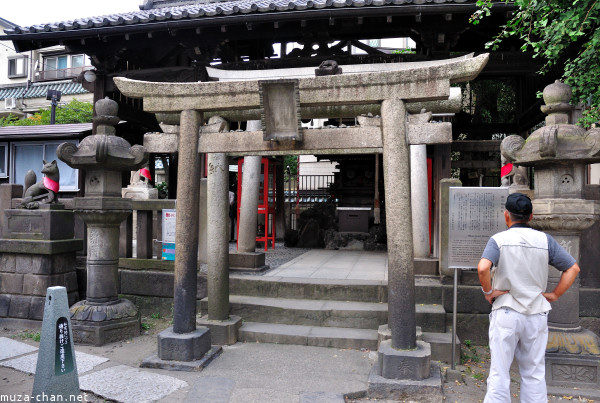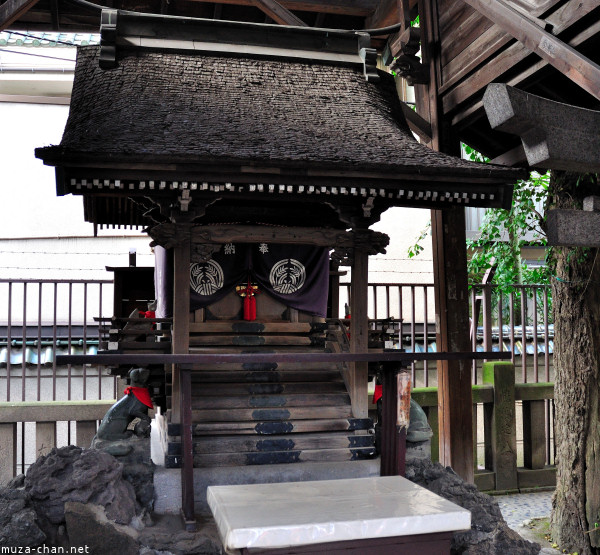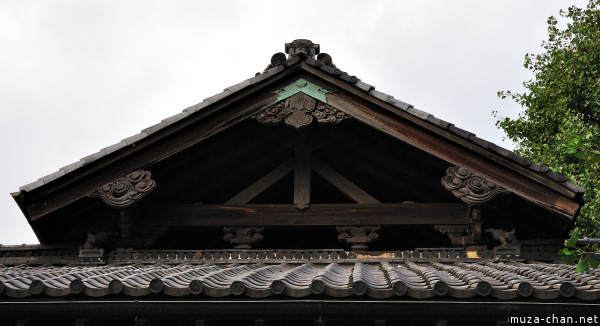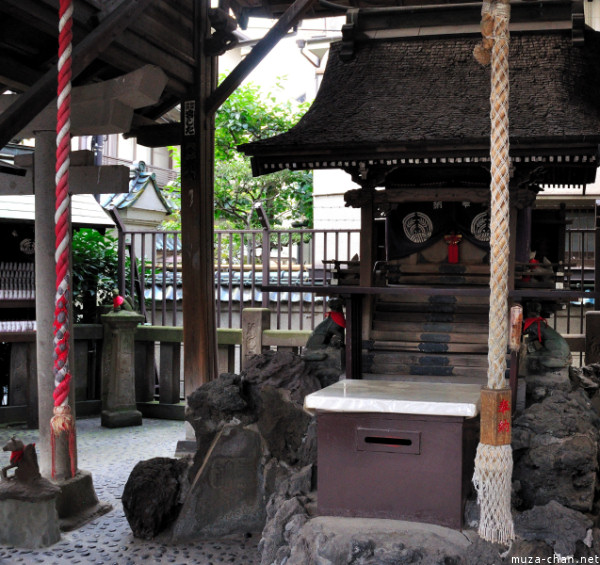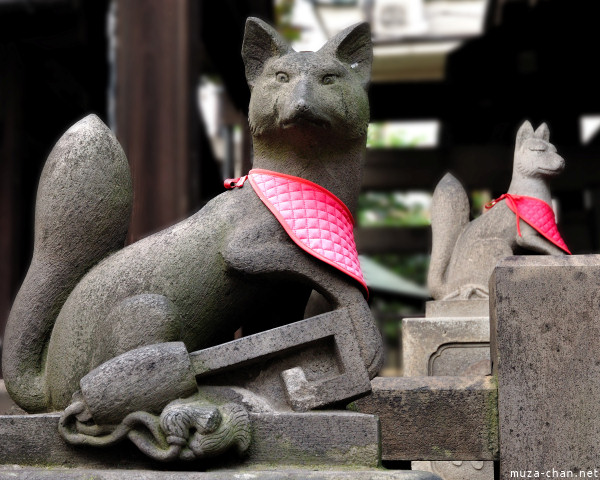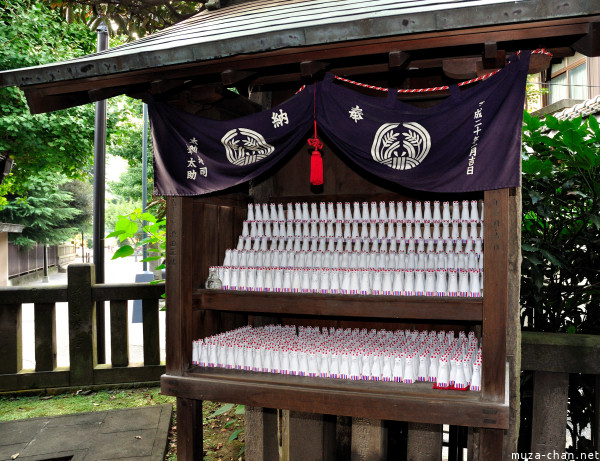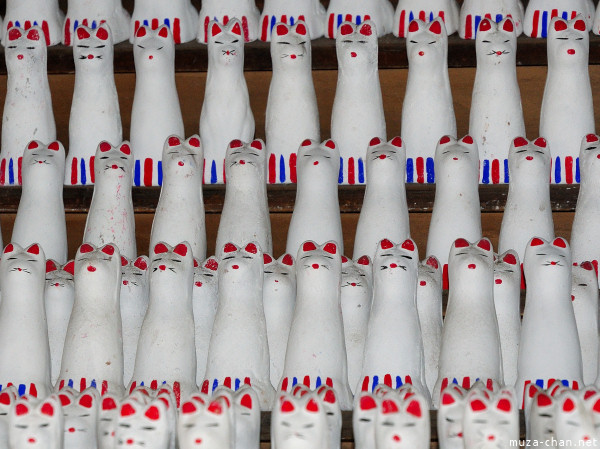Near Senso-ji, on the back of the Asakusa Shrine, there is a small, little known Inari Shrine. It was erected in 1854 and, unlike the Senso-ji Complex that was rebuilt after the bombardments from 1945, the Hikan Shrine is still in its original form.
It is approx. 1.5 meters by 1.4 meters…
… and it is protected under a covering roof:
The Shrine name’s origin is not clear, but “hikan” can have the meaning of “success in life".
The Shrine’s construction is related to a beautiful story of love and faith:
Shinmon Tatsugoro was the leader of the 10th division of the local Fire Brigade. When his wife became seriously ill, he went and prayed for her at the Fushimi Inari-taisha in Kyoto, the head Shrine of Inari.
Soon after, his wife recovered and to show his gratitude, the next year, Shinmon Tatsugoro built this Inari Shrine.
More photos:
The two kitsune guardians: the male…
… and the female (with a cub)…
… and hundreds of small kitsune statues, offerings brought by pilgrims:
La Senso-ji, în spatele altarului Asakusa, se află un mic altar Inari, puţin cunoscut. A fost construit în 1854 şi, spre deosebire de complexul Senso-ji care a fost reconstruit după bombardamentele din 1945, altarul Hikan a supravieţuit şi este în forma originală.
Are aproximativ 1,5 metri pe 1,4 metri…
… şi este aşezat sub un acoperiş protector:
Provenienţa numelui altarului nu este cunoscută, dar “hikan” poate avea semnificaţia de “succes în viaţă".
Construcţia altarului este legată de o frumoasă poveste despre iubire şi credinţă:
Shinmon Tatsugoro era liderul diviziei a 10-a de pompieri din zonă. Când soţia sa s-a îmbolnăvit grav, s-a dus şi s-a rugat pentru ea la altarul Fushimi Inari-taisha din Kyoto, principalul altar Inari. La scurtă vreme soţia s-a însănătoşit. Pentru a-şi arăta recunostinţa, în anul următor, Shinmon Tatsugoro a construit acest mic altar închinat lui Inari.
Mai multe fotografii:
Cei doi gardieni kitsune: masculul…
… şi femela…
… şi sute de mici statuete kitsune, ofrande aduse de pelerini:
